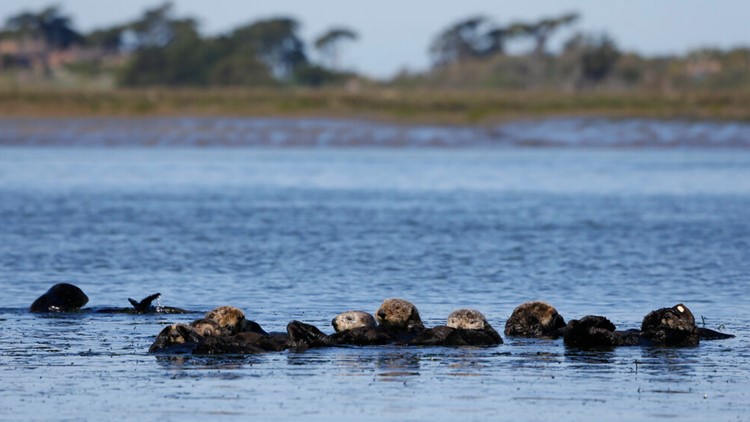TUCSON, Ariz. — A nonprofit group that aims to protect endangered species asked the U.S. Fish and Wildlife Service on Thursday to reintroduce sea otters to a stretch of the West Coast from Northern California to Oregon.
Threatened southern sea otters occupy only 13% of their historic range, with a small population of the mammals currently living on California’s central coast, the Center for Biological Diversity said.
“Bringing the sea otter back to the broader West Coast would be an unparalleled conservation success story,” said Kristin Carden, a senior scientist at the Arizona-based group. “Not only would the sea otters thrive, but they would also help restore vital kelp forest and seagrass ecosystems.”
The petition under the Endangered Species Act recommends that reintroduction occur between San Francisco Bay and Oregon and asks the Fish and Wildlife Service to assess the feasibility of reintroduction from Southern California into Baja California, Mexico.
North America’s smallest marine mammal, sea otters rely on dense fur to keep warm, attracting commercial fur traders who began slaughtering them in the mid-1700s.
Traders nearly drove the species to extinction, wiping out 99% of the global population, the Center for Biological Diversity said. Reintroductions have helped reestablish sea otter populations in Canada's British Columbia, Alaska, Washington State and California.
Though radically different creatures, sea otters fill a similar role to another creature that has suffered along the West Coast in recent years: sea stars. Both creatures naturally prey on sea urchins. But with otters wiped out and sea stars ravaged by a mysterious "wasting disease," sea urchin populations have run rampant.
As a result, the sea urchins have torn into Pacific kelp beds already threatened by warming ocean waters. Oregon’s kelp forests play a key role in the aquatic ecosystem, with fish, invertebrates and marine mammals relying on the oversized algae for food and refuge.



